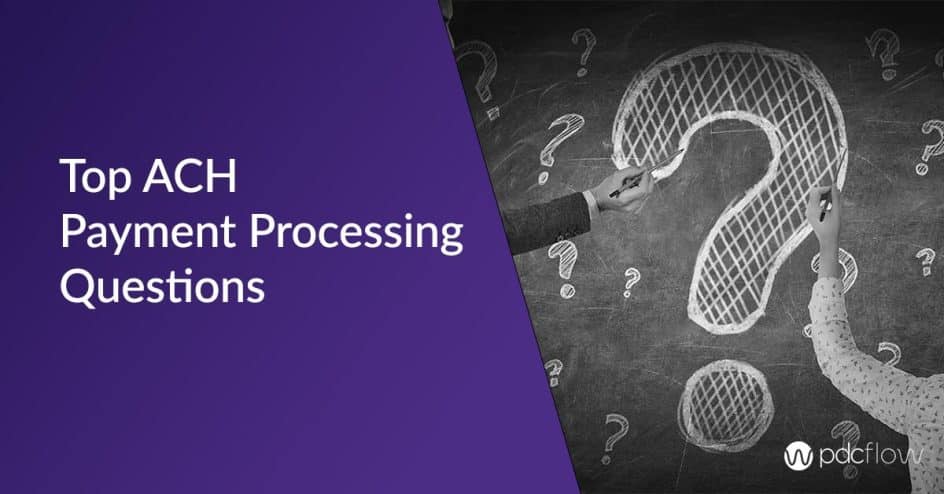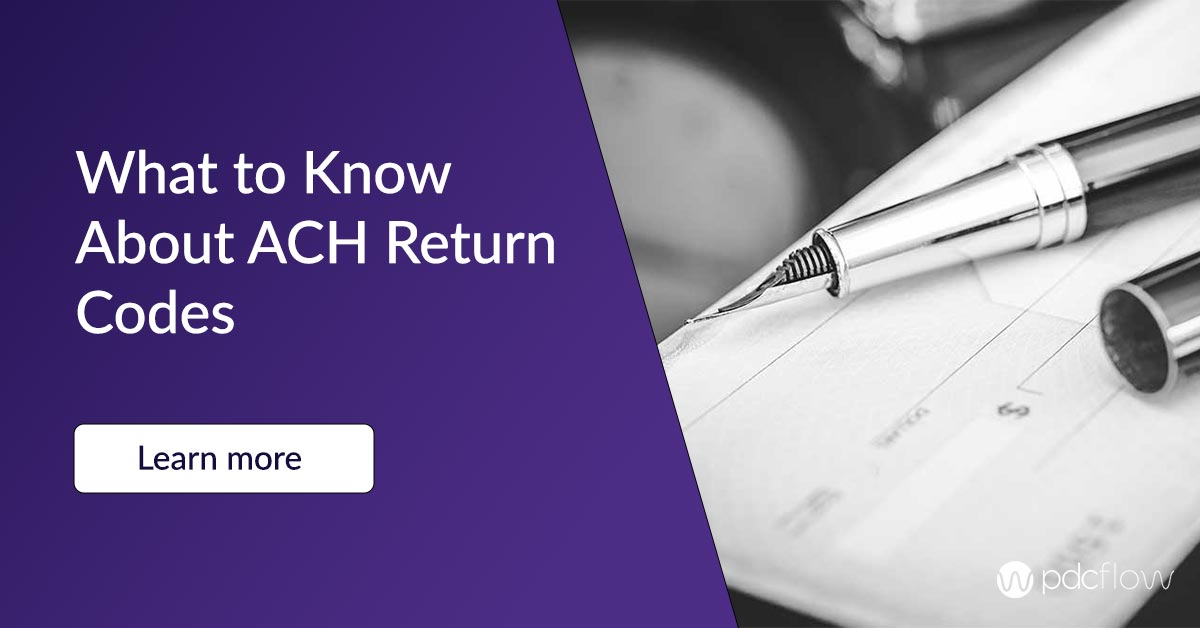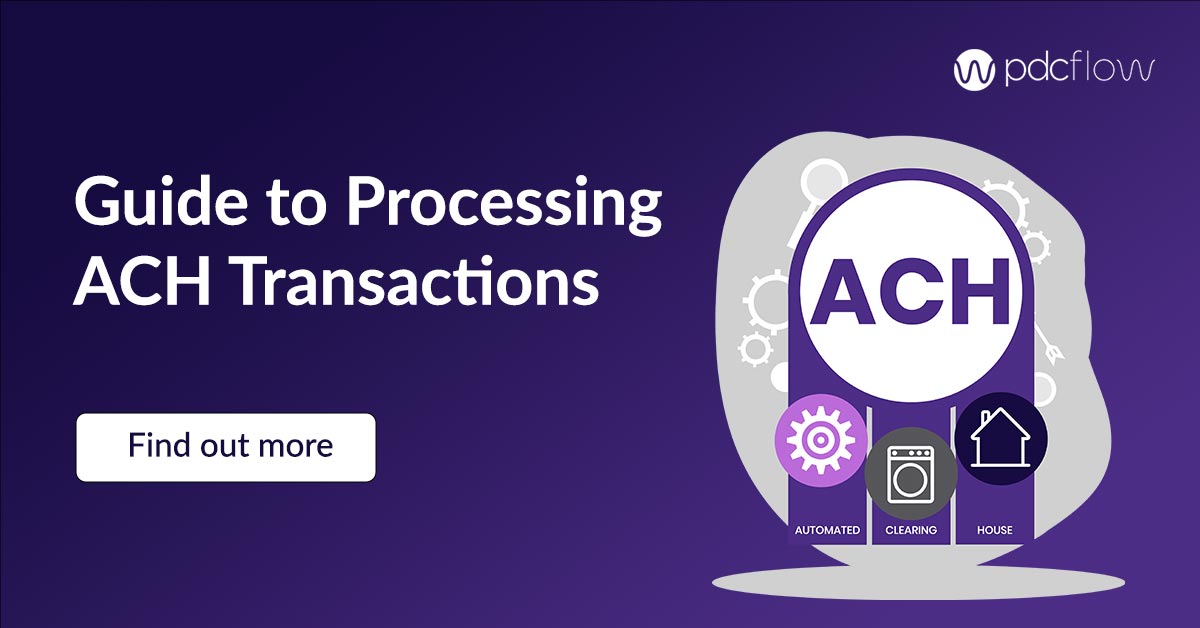Offering to accept ACH payments is an effective and low-cost method to enhance convenience for your customers. And, expanding payment processing options to include ACH can significantly increase your business's revenue.
However, on the operational side, processing ACH payments and reconciliation differ significantly from handling credit card transactions. Here are some of the most frequently asked questions merchants have regarding their ACH payment processing services.
What Does ACH Stand For in Banking?
ACH stands for Automated Clearing House, a crucial component of the U.S. financial transaction networks.
The Automated Clearing House is a network of financial institutions across the U.S. that enact Electronic Funds Transfers. The system exists to provide a way to transfer money from one account or financial institution to another.
This system, integral for ACH payments, is regulated by the electronic payments association, Nacha.
What is Nacha?
Nacha governs the ACH Network, the payment system that drives Direct Deposits and Direct payments.
Nacha develops the rules that allow Direct Deposits and ACH bill payments.
Explaining ACH Debit Transactions
What is an ACH Hold?
An ACH hold is when a payment is authorized by the owner of an account and the bank in charge of that account reserves (holds) the specified payment amount.
Holds exist because ACH payment processing takes time. In most cases, transactions are processed over a matter of days. The banks moving the funds need to be sure that money won’t be spent elsewhere before the ACH processing has been completed.
How Long Do ACH Payments Take to Process?
Standard ACH payment processing services offer ACH transfers on a four-day hold. However, many people don’t realize this refers to four business days.
Because ACH payments are batched and sent to the ACH network at the end of each day, the four-day count begins with processing the next morning. So no matter what day of the week an ACH payment is authorized, the ACH payment processing time usually takes about one week for funds to deposit in your company’s bank account after accounting for weekend days.
Your business can apply for shorter processing times, even same day ACH processing, but approval will depend on your ACH provider’s underwriting requirements.
What is the Difference Between Voiding and Crediting in ACH Processing?
Voiding an ACH payment can only be done before the payments have been batched and sent to the ACH network. This will stop the transaction from being submitted to the ACH network.
If the payment has not been stopped before the batch deadline, it must be credited to the consumer rather than voided.
However, many merchants may not be able to qualify for the ability to process an ACH credit through their ACH payment processor. Because crediting through the system requires a reserve of extra money to be kept in the merchant account, many businesses find it easier to refund money through paper checks or discounting the owed amount on a future payment.
How Much Does a Returned ACH Payment Cost My Business?
Returned payments can add up. Although simple returns may cost a little less, the typical return fee for an ACH payment can be as high as $25.
A return a consumer initiates through their bank – called a chargeback return – will come with a heftier fee for the merchant. Returns due to administrative issues are less costly and are most times avoidable.
How Can I Avoid Returned ACH Payments?
A simple way to prevent a chargeback return is to let consumers know what your company’s descriptor will look like on their bank statements. This will make sure they don’t contest the payment later on by not recognizing its origin.
You should also provide a customer service number on your receipt. It is always best that consumers can reach you with issues so they don’t have to contest a payment through their bank.
To avoid administrative returns, require dual authentication for the account number for online payments. Also, ensure your staff is trained correctly in how to use your payment processing system so they don’t make any unnecessary errors.
There are also three acceptable reasons Nacha lists for consumers to dispute an ACH debit:
- If the processed ACH payment was never authorized by the account holder or the authorization was revoked.
- If the ACH payment was processed on a date earlier than authorized.
- If the ACH payment is for an amount different than the amount the consumer authorized.
To combat these returns make sure you don’t leave consumers open to exercise these three types of disputes. This means obtaining the proper authorizations for one-time and recurring payments.
Acceptable Nacha Dispute Reasons
If the ACH payment was never authorized by the account holder or the authorization was revoked.
If the ACH payment was processed on a date earlier than authorized.
If the ACH payment is for an amount different than the amount the consumer authorized.
What is a Proof of Authorization?
TYPES OF ACH PAYMENTS
TEL - A one-time or recurring payment processed while on the phone with the consumer.
Proof of Authorization Requirements: voice recording/call recording OR email notification.
If a PDCflow payment suite client enters an email address when taking the payment over the phone, PDCflow automatically sends the Notice Prior to Debit on behalf of the client.
Or a client could use PDCflow’s Flow Technology and send the ACH payment form directly to their customer via email or SMS to complete the bank account information and send a copy of the transaction to themselves.
CCD - A one-time or recurring business-to-business ACH payment, requires written authorization or "wet" signature.
WEB - A one-time or recurring ACH processed via an online payment portal, requires input that validates identity, permission to debit and revocation language.
Sample Revocation Language
Many ACH Merchant Service Providers will do random checks of your ACH processing.
They aim is to ensure your company is obtaining the proper authorizations for each transaction type. If you receive a notice for proof of authorization and are unsure what is required of you, your payment processing software provider should be able to advise you.
What is an ACH Return? How Can It Impact My Business?
Nacha has created rules about how many returned ACH payments each merchant may have. This is done to minimize risk to the financial institutions that handle ACH processing and the consumers who use them to make payments.
The rates are found by calculating what percentage of total transactions are classified as returns. The three types are:
- Overall return rate - 15 percent
- Administrative return rate - 3 percent
- Unauthorized return rate - 0.5 percent
Some ACH merchant service providers may have even lower acceptable return rates in order to keep their merchants from exceeding these Nacha rates.
Nacha Return Rate Limits
15% – Overall Return Rate
3% – Administrative Return Rate
0.5% – Unauthorized Return Rate
What is an ODFI?
Understanding ODFI in ACH transactions
ODFI, or Originating Depository Financial Institution, initiates ACH entries at the request of its customers.
ODFIs are an essential part of the ACH network because they are the starting point for ACH transactions. They send the batched requests for ACH transfers to the ACH operator, which can be either the Federal Reserve or The Clearing House, depending on the transaction.
What is an RDFI?
RDFI also appears within many return codes. It stands for Receiving Depository Financial Institution.
The receiver is the individual or financial institution on the receiving end of a transaction (either receiving debited funds or having funds removed at the request of the originator).
Understanding RDFI in ACH transactions
What are the Most Common ACH Return Codes?
Some of the most common ACH return codes are administrative, associated with an account that has been closed or can’t be located (or if the account number is coming through as invalid).
There are other reasons an ACH payment might be marked as returned. Because of this, it’s hard for merchants to memorize the list of return codes you might come across.
Other codes apply to your overall return rate, such as insufficient funds or returned per ODFI. Other codes will count towards your ACH account’s unauthorized debit entries return rate. These include revoked authorizations and unauthorized debits among other codes.
If you're interested in learning more about improving your customer’s payment experience and your business cash flow, be sure to sign up for our weekly updates or monthly newsletter.





